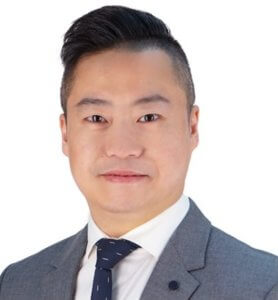

Adapting global practices to regional realities and blending technological advances with human intervention are key to combating claims fraud.
Insurance fraud has been a long-standing issue for the industry throughout the world – and combating it has been an ongoing process of innovation and adaptation by insurers and fraudsters alike, with claims being the primary area of focus.
This cycle has accelerated in recent years with the proliferation of technological and informational resources, the pace of adaptation on both sides has been rapid. Cost-of-living challenges have also contributed to a significant uptick in suspect claims. And as the world has grown more globalised, so too has the insurance industry – exacerbating the challenges for insurers, when best practices for tackling fraud can vary from country to country.
With the global landscape constantly shifting, it’s vital to consider how we in Asia can break down siloes, collaborate and develop strategies that can tackle claims fraud in the region, and further afield.
Understanding Asia
This might seem obvious, but the importance of deeply understanding the cultural, practical, legal, and bureaucratic realities of Asian markets cannot be understated. For example, because these factors, best practice in the UK is not necessarily what works in Hong Kong, and a risk indicator in Australia might not be a cause for concern in Malaysia.
Despite significant regional differences, insurers everywhere share a common priority: combating claims fraud. This is why I prefer to think of regional differences as a continuum. Every country is at different stages along the same journey. The destination is the same because we have a common denominator – in every language, claims fraud is seen as ”bad news”.
In Hong Kong, I’ve seen incredible enthusiasm from local insurers to work with global partners to apply well-established principles and insights to their local challenges. Approaching these partnerships as an exchange of ideas is key for both parties, as hearing from those who know their markets best is vital to tailoring a robust anti-fraud strategy, and hearing a new perspective can be invaluable for global firms.
Product line expertise is vital too. For example, we have a high rate of road traffic accidents in Asia, and this has led to an uptick in suspect claims, such as staged incidents and false injuries. Malaysia is a hotspot for such claims, with fraud losses estimated at around MYR2 billion (US$426 million) annually.
It’s not all about the motor product. In Hong Kong, the Federation of Insurers estimates that false claims make up 10-15% of all claims, with product lines such as healthcare, employee compensation and property all prominent.
At Sedgwick, we’re seeing an increase in organised, cross-border insurance fraud targeting various markets, including Asia.
Think global, act local
This leads to a core guiding principle: “think global, act local”. Established multinational insurers have significant resources and years of expertise, and those with roots in established insurance industries like the US and UK have gained invaluable learnings from operating at the cutting edge.
These are assets when tackling fraud anywhere, but without adaptability and communication they cannot be fully leveraged in expanding markets.
Collaboration between global and local insurance professionals is therefore key to developing a strategy that deploys knowledge and techniques in a way that meets local challenges and needs. It is important for multinationals to give leaders in each country the autonomy to iterate and adapt to these global processes without unnecessary red tape.
At Sedgwick, we’re strengthening our claims fraud service in exactly this way in all of our Asia operations, on a country-by-country basis, with full support from our international head of claims fraud and his wider team.
Maximising technology
Data plays another key role. It’s impossible to discuss today’s fraud landscape without touching on artificial intelligence and machine learning, and the revolutionary potential they might have for tackling claims fraud.
Much of the excitement over these latest technologies is warranted. Insurers have long been at the forefront of using data to codify risk indicators, flag suspicious claims, and identify patterns that help them pre-empt fraud.
Currently, training and deploying powerful models that can adapt to the specifics of each market requires consistently and diligently recording and structuring data. However, with the rise of natural language processing and unstructured data analysis, it’s possible that AI could soon determine the myriad data points generated in the claimant customer journey to discover insights and patterns that humans simply cannot.
This has particularly transformative implications for countries with fewer resources available to analyse the data themselves, or where data is less meticulously logged. It offers the potential for early insights into new fraud trends specific to each region without a bias towards developed Western economies, which currently account for the bulk of claims fraud datasets and research.
We need to grasp and maximise how technology can help us tackle claims fraud in Asia.
The human element
Technology will continue to help fight fraud, but it can never replace people. Data-driven insights can help us model and identify suspicious patterns, but people who commit fraud are not machines. Statistical analysis is a challenge when the rules of the game aren’t fixed, and perpetrators think and act unpredictably.
Despite the pace of digitalisation across the insurance industry, fraud detection and claims validation remain areas where human intervention is vital, requiring strong conversation management skills and intuition to detect deception. Technology can break down vast volumes of data and flag suspicious patterns, but these insights require the interpretation of skilled claim handlers and investigators, whose knowledge of their local markets and cultures will always be paramount.
Human interpretation and interactions remain key, and a blended approach can leverage technology to inform fraud investigations and fact-verification services. Early insights on current regional hotspots and the types of claims and claimant traits to look out for can empower human investigators – but they cannot replace them.
In summary
Insurance will always attract those trying to fraudulently beat the system, and it can be overwhelming to understand how to fight back, especially on a global scale.
But by adopting a ‘think global, act local’ approach in terms of the exchange of ideas, adaptation of best practices, and consistent reporting and information sharing, systems can be built that not only suit the needs of local markets here in Asia but contribute to global tools and insights that are greater than the sum of their parts.
Technology will continue to transform the techniques through which fraud is both committed and combatted, but aligning global solutions with skilled local professionals will ensure the industry can fight back.
Sedgwick is present in nine countries in Asia, and we’re strengthening our claims fraud and fact verification service throughout the continent.
 |
Patrick Au
Senior Manager, Casualty and Fraud, Hong Kong
Email: [email protected] |
 |
Steve Crystal
Head of Claims Fraud – International
Email: [email protected] |
-
Allianz General | Allianz General combines innovative protection solutions while powering social good to lead Malaysian market
The insurer proactively addresses emerging risks and evolving customer protection needs while giving back to the community.
-
Sedgwick | Asia’s Energy Transformation – Balancing Growth, Risk and Renewables
Energy market presents unique risks, especially in a region which includes China and Japan as well as developing nations like Vietnam and the Philippines.
-
Beazley | Turbulent Waters: the maritime energy transition challenge
Businesses are facing a complex transition to non-carbon energy sources amid a push to achieve net-zero emissions for the marine sector by 2050.
-
Aon | Navigating shifts in the global and Asia insurance markets
Neelay Patel, Aon head of growth for Asia, says the market in Asia is at an ‘interesting stage of the cycle’.
